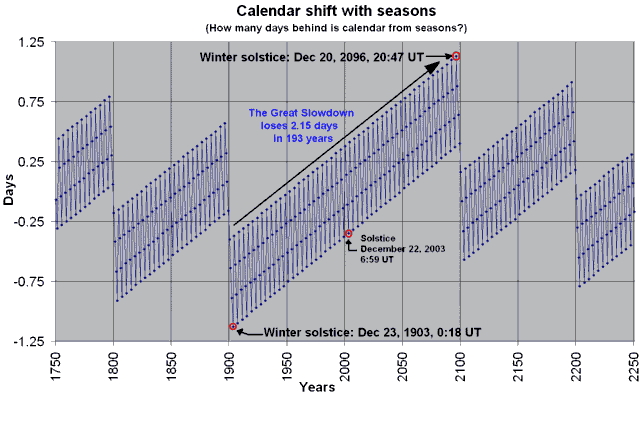No the "official" solstice, according to the U.S. Naval Observatory was December 21, 2009 at 17:47 UT. The formal definition of the solstice is not particularly intuitive, but it would be safe to say that the date of the solstice corresponds, more of less, to the day when the noon day sun is as low in the Northern Hemisphere sky as it will get all year. The Pagans appear to be correct on this one.
For people living in time zones more than 6 hours and 13 minutes ahead of Greenwich, the December Solstice will indeed have occured on December 22, since the clock already passed midnight.

This graph illustrates the effect of the Gregorian Calendar leap year schedule on the UT date of the solstice. The four year leap year period accounts for most of the difference between the mean solar year and 365 days. Every hundred years we skip a leap year to correct for the century long drift of about a quarter of 3/4 of a day per century and every 400 years (e.g., 2000) we skip skipping a year to account for the quarter of a day difference that would accumulate over the centuries.
Unfortunately, the mean solar year is not exactly 365.2425 days, nor any rational fraction of a day nor even constant. A future pope will have to reform the calendar again.